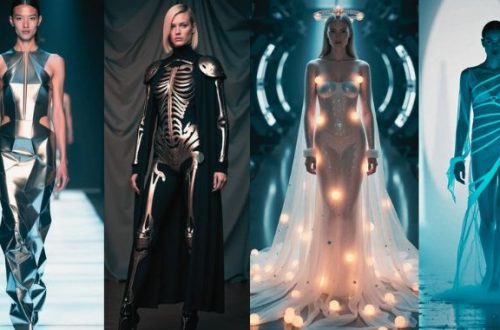Introduction
The fashion industry has always been driven by creativity — but in today’s world, creativity is meeting technology. Artificial intelligence (AI), data analytics, and digital tools are transforming how fashion is imagined, designed, and delivered. From predicting style trends to creating virtual garments, technology is no longer just an accessory — it’s at the heart of fashion’s evolution.
Inspired by digital pioneers like FashionWeekOnline.co.uk, this article explores how AI and technology are reshaping modern design and redefining what it means to be fashionable in the 21st century.
The Digital Revolution in Fashion Design
Fashion has always reflected cultural and technological change. Just as the sewing machine revolutionized clothing production in the 19th century, AI and digital platforms are transforming the creative process today.
Designers now use advanced software to visualize collections before they even exist physically. 3D modeling allows them to perfect fits, experiment with fabrics, and explore color combinations instantly. This not only saves time but also reduces waste — a crucial step toward sustainable fashion.
Through digital innovation, creativity is becoming faster, smarter, and more precise.
Artificial Intelligence: The Designer’s New Partner
AI is becoming one of the most valuable collaborators in fashion. It analyzes vast amounts of data — from past collections to social media trends — helping designers understand what customers really want.
For example, AI can forecast upcoming color palettes, silhouettes, and even fabric preferences by studying online engagement and shopping patterns. This predictive power enables designers to create collections that feel both innovative and relevant.
Fashion brands like H&M, Dior, and Tommy Hilfiger are already using AI to personalize shopping experiences and optimize production lines. But the true beauty lies in how AI complements human creativity rather than replacing it — providing designers with insights that inspire rather than dictate.
3D Design and Virtual Sampling
The rise of 3D fashion software is changing how collections are developed. Designers can now build garments digitally, testing proportions and movements in real time without needing to cut a single piece of fabric.
Virtual sampling dramatically reduces waste and costs. Instead of producing dozens of prototypes, brands can design digitally, share renders with buyers, and make adjustments instantly.
Platforms like FashionWeekOnline.co.uk often highlight how digital design tools are becoming standard in fashion schools and professional studios alike. This shift marks a new era where art meets technology to create efficiency and sustainability.
AI in Fabric Innovation
Beyond design visualization, AI is also helping create smarter materials. Researchers are developing fabrics that respond to temperature, humidity, or body movement — merging comfort and performance with style.
Machine learning algorithms can analyze the molecular structure of textiles, helping scientists invent materials that are biodegradable or energy-efficient. From smart textiles to eco-friendly alternatives, technology is revolutionizing the very foundation of what we wear.
Virtual Fashion Shows and Digital Clothing
Technology has also transformed how fashion is presented to the world. Virtual fashion shows, powered by augmented reality (AR) and artificial intelligence, became popular during global lockdowns — and they’re here to stay.
These immersive experiences allow designers to showcase collections to a global audience without physical boundaries. Some brands now sell digital-only garments designed for avatars or social media use — blurring the lines between reality and virtual expression.
FashionWeekOnline.co.uk has been instrumental in promoting these innovations, offering coverage that connects designers, digital artists, and audiences eager for the future of fashion.
Personalization and Smart Shopping
AI doesn’t just help in design — it’s changing how consumers shop. Personalized recommendations, virtual fitting rooms, and chat-based stylists have made online fashion more interactive than ever.
With computer vision and data analytics, AI can suggest outfits based on a shopper’s preferences, body type, or even mood. This personalization creates a deeper connection between brand and customer, turning online shopping into a curated fashion journey.
Balancing Creativity and Technology
While AI brings endless possibilities, it also raises important questions. Can technology replace creativity? The answer is no — it enhances it. Machines can analyze patterns, but only humans can interpret emotion, culture, and meaning.
The key lies in balance. Designers who embrace technology without losing their artistic vision will define the next generation of fashion. The goal isn’t to create robotic clothing — it’s to use innovation to express individuality more beautifully and responsibly.
Conclusion
AI and technology are reshaping fashion from the inside out — revolutionizing design, production, and presentation. What once took months can now be done in hours, and what was once wasteful is becoming sustainable.
As platforms like FashionWeekOnline.co.uk continue to highlight these transformations, one thing becomes clear: the future of fashion belongs to those who embrace change. With AI as an ally, designers are not losing their creative spirit — they’re expanding it into new, exciting dimensions.
The fusion of art and technology is no longer a trend — it’s the new definition of style.





